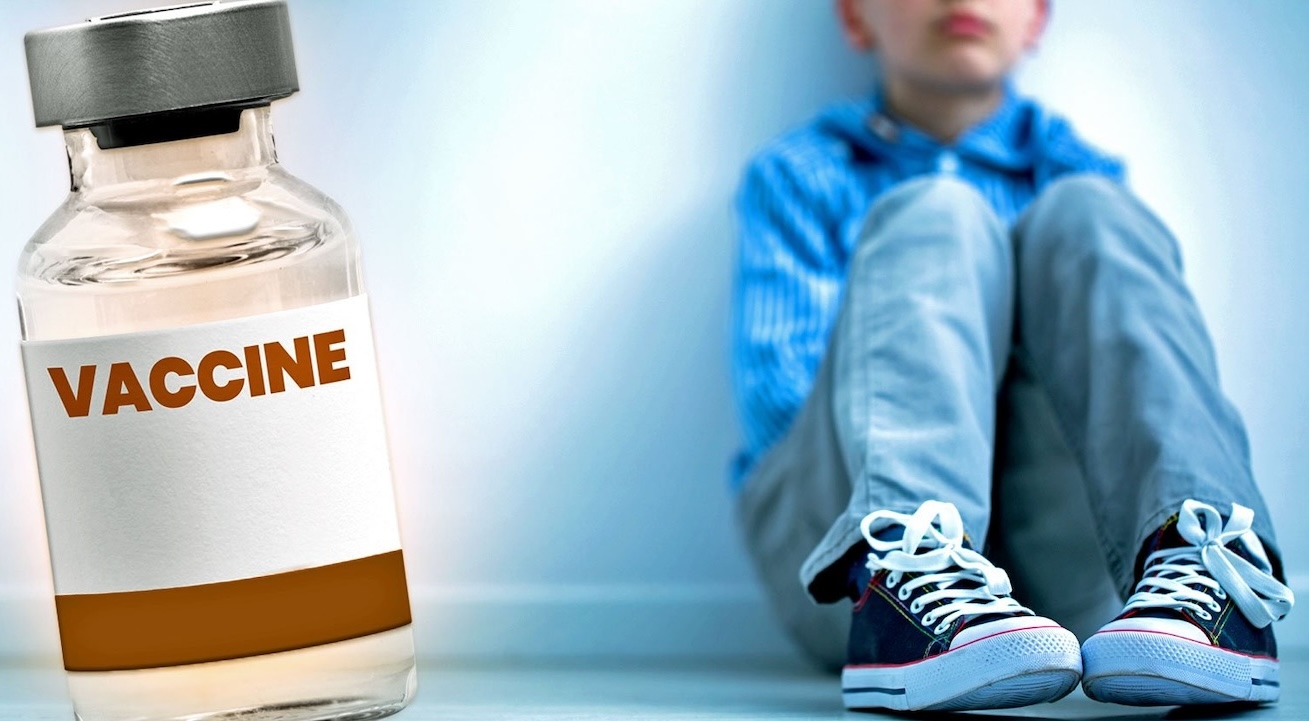5 Scientific Findings Explain Link Between Vaccines and Autism

Why Do Health Agencies Ignore Them?
by Brenda Baletti – originally published on The Defender – Children’s Health Defense website
Five major scientific findings, taken together, explain how vaccines trigger autism, author J.B. Handley wrote on his Substack. The cause is rooted in the body’s response to the aluminum adjuvant used in six vaccines on the childhood immunization schedule.
Federal public health agencies continue to ignore these scientific advances — made largely by prominent scientists working outside of the U.S. in the last decade — despite the scientists’ appeals to agencies to investigate the link and to stop telling the American public the aluminum in vaccines is safe.
The trigger for autism and other neurodevelopmental disorders, according to Handley, is immune system activation that can alter the developing brain when the activation occurs either in a pregnant mother or a young child.
This happens because the neurotoxic aluminum in vaccines travels easily to the brain. There, it can cause inflammation in vulnerable people by triggering the production of a key cytokine — interleukin 6 or IL-6 — a protein that affects the immune system. IL-6 has been linked to autism.
Handley, author of the best-selling book, “How to End the Autism Epidemic,” co-founder of the Age of Autism website and father of a son with autism, draws heavily on the Vaccine Papers website, which collects and analyzes relevant science, to outline the key scientific findings that make this case.
This important research largely happens outside of the U.S. because autism research that is “even remotely controversial” is impossible to get funded or approved, he wrote.
The research Handley cites began to emerge in 2004, and much of it came out after 2009 — after the Vaccine Court dismissed the autism-vaccine hypothesis and denied compensation for their vaccine injuries to thousands of families.
Pfizer ready to Pay more than 10,000 Personal-Injury Claims from Users of Its Drug
Quoting Vaccine Papers, Handley wrote that vaccines must be subjected to an objective risk-benefit analysis and should be considered as a medical treatment only if they do more good than harm: “The problem with vaccines is that risks have been underestimated, and the benefits overestimated. In particular, the risk of brain injury from vaccines is much higher than commonly believed.
“Brain injury can be devastating to the life of a child, and the child’s family. The personal and financial costs of vaccine injury are often enormous. Therefore, even a small risk of brain injury must be considered seriously. And the science strongly suggests that the risk is not small.”
Aluminum adjuvant: the data missing from an ‘airtight explanation’ of vaccine-induced autism
Handley began the story with the discovery that he said ties together the research on vaccines and autism: a 2018 paper by Christopher Exley, Ph.D., and colleagues showing “shockingly high” levels of aluminum in 10 autism brain specimens.
According to Exley, the location of the aluminum suggested it was entering the brain through pro-inflammatory cells that had become loaded with the neurotoxin. Exley’s finding is similar to previous research showing what happens with monocytes — a type of white blood cell — at vaccine injection sites.
This is significant, Handley wrote, because it would become clear that macrophages (a type of monocyte) were moving aluminum from the injection site to the brain. Exley’s study “provided the only data missing from an airtight explanation” of what happened to the countless families whose children developed autism following vaccination, according to Handley.
Aluminum adjuvant is an additive that “serves to wake up” the immune system so it recognizes the antigen for whatever the vaccine is meant to protect against, he explained.
The amount of aluminum children are exposed to has skyrocketed since the 1990s, according to a 2016 study — because vaccination rates for all children rose substantially and more vaccines were added to the childhood schedule.
“A child in the mid-1980s would have received 1,250 micrograms of aluminum from their vaccines by their 18-month birthday if they were fully vaccinated,” he wrote. “Today, that number is 4,925 micrograms, a near-quadrupling of total aluminum.”
Yet, aluminum has never been tested for safety in vaccines for babies. It is a demonstrated neurotoxin that carries a risk for autoimmunity, according to Canadian scientists Chris Shaw, Ph.D., and Lucija Tomljenovic, Ph.D., Canadian scientists.
Aluminum is the most common vaccine adjuvant, even though the mechanisms through which it works as an adjuvant remain unknown. Despite the lack of data on its toxicology, “the notion that aluminum in vaccines is safe appears to be widely accepted,” Shaw and Tomljenovic wrote.
Even the Centers for Disease Control and Prevention (CDC) and National Institutes of Health (NIH) have admitted they have no data to show repeated injections with an aluminum adjuvant is safe, Handley wrote.
Now a growing volume of scientific literature shows that those repeated injections are unsafe. The literature shows that “five clear, replicable, and related discoveries explaining how autism is triggered have formed an undeniably clear picture of autism’s causation,” Handley wrote.
Five key discoveries
by Brenda Baletti – originally published on The Defender – Children’s Health Defense website
LINKS MAIN SOURCES
GOSPA NEWS – WUHAN-GATES DOSSIER
Study Shows European Excess Mortality Correlates With COVID-19 Vaccines



